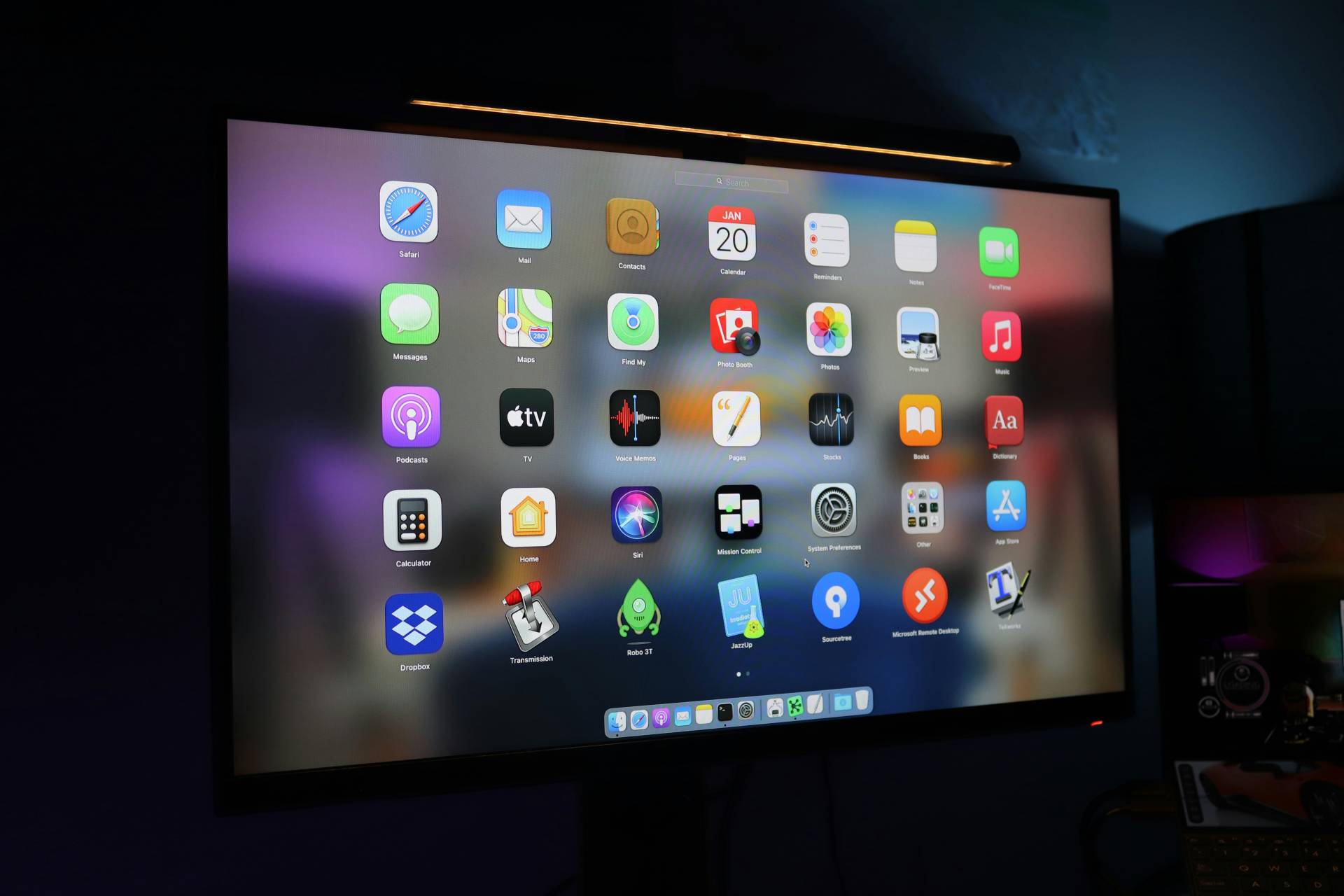In today’s digital age, mobile apps have become an essential tool for businesses to reach and engage with their target audience. However, when it comes to developing a mobile app, there are different types to consider. Each type has its own advantages and disadvantages, and choosing the right one for your business can be a crucial decision.
In this comprehensive guide, we will explore the various types of mobile apps available, including native apps, hybrid apps, web apps, and progressive web apps. We will delve into the technology used, the pros and cons of each type, and how to choose the most suitable option for your business needs.
Native Apps: Harnessing the Power of One Platform

Native apps are a category of mobile applications specifically designed and developed for a particular operating system (OS) or platform. They are optimized to run on a single platform, such as iOS (Apple) or Android (Google), taking full advantage of the device’s features and capabilities. Native apps are created using platform-specific programming languages and tools, which allows them to deliver the best performance, user experience, and integration with the OS.
Here are some key characteristics and examples of native apps:
Characteristics of Native Apps:
- Platform-Specific Development: Native apps are developed using platform-specific programming languages and development environments. For iOS, developers use Swift or Objective-C, while Java or Kotlin is used for Android.
- Optimized Performance: Native apps offer high-performance levels because they are tightly integrated with the underlying OS. They can access device-specific hardware features like camera, GPS, and sensors, providing a seamless user experience.
- Native Look and Feel: These apps adhere to the design guidelines and user interface elements of the respective platforms, ensuring a consistent and familiar look for users.
- Access to App Stores: Native apps are distributed through platform-specific app stores like the Apple App Store and Google Play Store, making them easily discoverable by users.
- Offline Functionality: Many native apps can function offline, allowing users to access certain features and content without an internet connection.
Examples of Native Apps:
- Facebook (iOS and Android): Facebook’s native apps for iOS and Android are built to deliver a smooth and responsive social media experience, taking advantage of platform-specific features.
- Instagram (iOS and Android): Instagram’s native apps provide a visually engaging platform for sharing photos and videos, with a focus on smartphone camera integration.
- Google Maps (iOS and Android): Google Maps offers native apps for both major platforms, delivering precise location-based services and navigation.
- WhatsApp (iOS and Android): WhatsApp’s native apps ensure secure and reliable instant messaging, voice, and video calls on mobile devices.
- Angry Birds (iOS and Android): The popular game Angry Birds is available as a native app on both iOS and Android, delivering a consistent gaming experience on each platform.
Native apps are an excellent choice when developers want to provide the best possible user experience for a specific platform. However, it’s essential to note that developing separate native apps for different platforms can be time-consuming and costly. This has led to the rise of alternative app development approaches like hybrid apps and progressive web apps, which aim to bridge the gap between multiple platforms while maintaining performance and user experience.
Hybrid Apps: The Best of Both Worlds

Hybrid apps represent a versatile category of mobile applications that combine elements of both native and web apps. They are designed to work on multiple platforms, such as iOS and Android, using a single codebase. Hybrid apps are developed using web technologies like HTML, CSS, and JavaScript, making them more cost-effective and efficient for businesses aiming to reach a broader audience.
Here are some key characteristics and advantages of hybrid apps:
Characteristics of Hybrid Apps:
- Cross-Platform Development: Hybrid apps are developed once and can be deployed on multiple platforms, reducing development time and costs compared to native apps.
- Web Technologies: They are built using web technologies like HTML, CSS, and JavaScript, which are widely known and accessible to developers.
- Access to Device Features: Hybrid apps can access device features through plugins and APIs, allowing them to utilize functions like camera, geolocation, and push notifications.
- Native-Like User Interface: With the use of frameworks like React Native and Ionic, hybrid apps can achieve a native-like user interface and performance.
- Distribution through App Stores: Similar to native apps, hybrid apps can be distributed through app stores, providing visibility to a vast user base.
Advantages of Hybrid Apps:
- Cost-Efficiency: Developing a single codebase for multiple platforms can significantly reduce development and maintenance costs.
- Faster Development: Hybrid apps can be developed more quickly than separate native apps for each platform, allowing businesses to reach their audience faster.
- Consistent User Experience: Hybrid apps can offer a consistent user experience across different platforms, maintaining brand identity and functionality.
- Easier Updates: Updates and changes can be applied universally to the app’s codebase, simplifying the maintenance process.
Examples of Hybrid Apps:
- Instagram (Webview): Instagram initially used a hybrid approach by embedding its web-based platform into a native shell, providing a cross-platform experience.
- Uber (React Native): Uber’s driver app is developed using React Native, allowing it to work seamlessly on both iOS and Android.
- Twitter (Ionic): Twitter’s developer community used the Ionic framework to create a hybrid app, providing a consistent experience for users on various platforms.
- Basecamp (Webview): The project management tool Basecamp employs a hybrid approach by wrapping its web app in a native container for distribution.
- Couchbase (Cordova): Couchbase’s mobile database solution utilizes Apache Cordova to offer a hybrid app for data management and synchronization.
Hybrid apps have gained popularity for businesses and developers seeking a balance between cross-platform compatibility and efficient development. They are a practical choice for startups and organizations with limited resources, as they allow for broader market reach without the need for separate native app development. However, hybrid apps may have some limitations in terms of performance and access to certain native features compared to fully native apps.
Web Apps: Accessible Anywhere, Anytime

Web apps, short for web applications, are a category of mobile applications that run entirely within a web browser. Unlike native or hybrid apps, web apps don’t need to be downloaded or installed from an app store. Users can access them directly through a web browser on their mobile devices, making them highly accessible and platform-agnostic.
Here are some key characteristics and benefits of web apps:
Characteristics of Web Apps:
- Platform-Independence: Web apps are not tied to any specific operating system or device. They can be accessed on smartphones, tablets, and desktop computers with internet connectivity.
- No Installation Required: Users don’t need to download or install web apps from an app store. They can simply access the app by entering its URL in a web browser.
- Universal Accessibility: Web apps are accessible to a wide audience, regardless of their device’s operating system, as long as they have an internet connection.
- Easy Updates: Developers can make changes and updates to web apps in real-time, and users will always access the latest version without needing to update anything on their devices.
- Lower Development Costs: Developing a web app typically costs less than building native or hybrid apps for multiple platforms, as it involves a single codebase.
Benefits of Web Apps:
- Wide Reach: Web apps can reach a broad audience, making them an excellent choice for businesses targeting users across various devices and platforms.
- Instant Access: Users can access web apps immediately without going through the app store download and installation process.
- No Storage Limitations: Since web apps don’t need to be installed on a device, they don’t take up storage space, which can be an advantage for users with limited storage.
- Cross-Device Compatibility: Web apps are designed to adapt to different screen sizes and device types, providing a consistent experience.
Examples of Web Apps:
- Gmail: Gmail is a popular web-based email client that users can access from any web browser on their mobile devices.
- Google Docs: Google Docs offers a web app version of its document editing and collaboration software, accessible on mobile browsers.
- Trello: Trello’s project management tool is available as a web app, allowing users to manage tasks and projects from their mobile browsers.
- Microsoft Office Online: Microsoft Office Online provides web app versions of popular office productivity tools like Word, Excel, and PowerPoint, accessible on mobile devices.
- Twitter (Mobile Website): Twitter offers a mobile-friendly web app that users can access via web browsers on their smartphones.
Web apps are an ideal choice when universal accessibility and cost-efficiency are top priorities. They are well-suited for tasks such as document editing, email management, collaboration, and content consumption. However, they may have limitations in terms of offline functionality and access to certain device features compared to native or hybrid apps.
Progressive Web Apps: The Future of Mobile Apps
Progressive Web Apps (PWAs) represent a cutting-edge category of mobile applications that combine the best of both web and native apps. PWAs are web apps that leverage modern web technologies and best practices to provide a fast, reliable, and engaging user experience on mobile devices. They are designed to work seamlessly across various platforms and browsers, offering a glimpse into the future of mobile app development.
Here are the key characteristics and advantages of Progressive Web Apps:
Characteristics of Progressive Web Apps:
- Responsive Design: PWAs are built with responsive web design principles, ensuring that they adapt and function well on devices of all sizes, from smartphones to tablets and desktops.
- Progressive Enhancement: PWAs are designed to work on all browsers and progressively enhance the user experience on browsers that support advanced features, such as service workers and push notifications.
- Offline Capabilities: PWAs can work offline or in low-network conditions, thanks to the use of service workers that cache essential app resources and data.
- App-Like Experience: PWAs offer an app-like experience with smooth animations, intuitive navigation, and responsive touch gestures, blurring the line between web and native apps.
- Safety and Security: PWAs are served over HTTPS, ensuring the security and privacy of user data. They also benefit from the same security protocols as traditional web applications.
- Home Screen Installation: Users can add PWAs to their device’s home screen, providing easy access without the need to visit an app store or download an app.
Advantages of Progressive Web Apps:
- Cross-Platform Compatibility: PWAs work across different platforms and devices, reducing the need for separate development efforts for iOS and Android.
- Lower Development Costs: Developing a PWA can be cost-effective compared to building separate native apps for multiple platforms.
- Faster Loading: PWAs load quickly, even on slow connections, thanks to their efficient use of caching and service workers.
- Improved Engagement: Features like push notifications enable PWAs to engage users even when the app is not actively open, increasing user retention.
- Seamless Updates: PWAs are updated on the server, ensuring that users always have access to the latest version without manual updates.
Examples of Progressive Web Apps:
- Twitter Lite: Twitter Lite is a PWA that offers a streamlined Twitter experience, optimized for fast loading and offline access.
- Pinterest: Pinterest’s PWA provides users with a visually rich and interactive experience, even in low-network conditions.
- Flipkart: The Flipkart PWA offers a shopping experience that rivals native apps, with features like push notifications and offline shopping.
- Starbucks: Starbucks’ PWA allows customers to order coffee, customize their drinks, and find nearby stores, all within the browser.
- Forbes: Forbes’ PWA offers a responsive and engaging platform for reading articles and staying updated on news.
Progressive Web Apps are gaining traction as a forward-looking approach to mobile app development. They offer the advantages of cross-platform compatibility, lower development costs, and improved user engagement, making them an attractive choice for businesses looking to provide a high-quality mobile experience to a broad audience. As web technologies continue to evolve, PWAs are poised to play a significant role in the future of mobile apps.
Choosing the Right Mobile App Type for Your Business
Selecting the appropriate mobile app type for your business is a crucial decision that can significantly impact your reach, user experience, and development costs. Each mobile app category—native, hybrid, web, and progressive web apps—has its own set of advantages and disadvantages. Here are some key factors to consider when deciding which app type suits your business needs:
- Audience and Platform Preferences: Understand your target audience and their preferred devices and platforms. If your audience primarily uses iOS devices, a native iOS app may be a priority. For a broader reach, hybrid or web apps may be more suitable.
- Budget and Resources: Assess your budget and available resources for app development and maintenance. Native apps often require separate development for each platform, potentially increasing costs. Web and hybrid apps can be more cost-effective options.
- Features and Performance: Consider the specific features and performance requirements of your app. If your app relies heavily on device-specific capabilities like GPS or camera access, native development may be necessary for optimal performance.
- Offline Functionality: Determine whether your app needs to function offline or in low-network conditions. Native and progressive web apps are better suited for offline capabilities, while web apps may require a constant internet connection.
- Development Timeline: Evaluate your timeline for launching the app. Native app development for multiple platforms can be time-consuming. If time is of the essence, hybrid or progressive web apps may offer faster development.
- User Experience: Prioritize user experience and interface design. Native and progressive web apps can provide a more polished and responsive user experience, while well-designed web and hybrid apps can come close.
- Updates and Maintenance: Consider the ease of updating and maintaining your app. Progressive web apps offer seamless updates, while native apps require users to download updates from app stores.
- Marketing and Discoverability: Think about how users will discover your app. Native and hybrid apps are typically found on app stores, while web and progressive web apps rely on web search or direct URLs.
- Scalability: Plan for future growth and scalability. Assess whether your chosen app type can accommodate additional features or changes as your business evolves.
- User Engagement: Explore engagement strategies such as push notifications. Native and progressive web apps offer robust options for engaging users, while web apps may have limitations.
- Security and Privacy: Consider the security and privacy requirements of your app and user data. All app types can be made secure, but adherence to best practices is essential.
- Development Expertise: Assess the availability of development expertise for your chosen app type. Ensure that your development team has the necessary skills and experience.
In many cases, businesses opt for a combination of mobile app types to cater to different user segments and preferences. For example, a business might have a native app for iOS users, a progressive web app for broader accessibility, and a web app for informational purposes.
Ultimately, the right mobile app type for your business will depend on your unique goals, audience, and resources. Careful consideration of these factors will help you make an informed decision that aligns with your business objectives and ensures a successful mobile app strategy.
Wrapping Up
In this comprehensive exploration of mobile app types, we’ve delved into the diverse landscape of mobile applications, each with its unique characteristics and advantages. As we approach 2024, the choices available to businesses and developers for crafting mobile experiences have expanded, offering more versatility than ever before.
- Native Apps provide exceptional performance and access to platform-specific features, making them ideal for users seeking a polished, device-centric experience.
- Hybrid Apps offer a cost-effective solution for cross-platform development, striking a balance between reach and development efficiency.
- Web Apps are accessible from any browser, providing universal reach and a straightforward development process, while maintaining data security.
- Progressive Web Apps (PWAs) represent the future, bridging the gap between web and native apps, with features like offline functionality and a seamless user experience.
Selecting the right mobile app type for your business hinges on a multitude of factors, from audience preferences to development resources and performance requirements. By carefully considering these elements, you can align your app strategy with your business objectives and user expectations.
As the mobile app landscape continues to evolve, staying informed about emerging trends and technologies will be crucial to remain competitive and meet the ever-changing demands of mobile users. Whether you choose native, hybrid, web, or progressive web apps, one thing is certain: mobile apps will continue to play an integral role in shaping the digital landscape and connecting businesses with their audiences in the years to come.
As you embark on your mobile app journey in 2024, may your choice of app type be guided by the needs of your users and the goals of your business. Here’s to a successful and innovative mobile app experience in the dynamic world of technology and connectivity.
Frequently Asked Questions
1. What are the 3 types of mobile apps?
The three primary types of mobile apps are Native Apps, Hybrid Apps, and Web Apps. Additionally, Progressive Web Apps (PWAs) are a modern approach that combines elements of web and native apps.
2. What are the different types of smartphone apps?
Smartphone apps can be categorized into various types, including social media apps, communication apps, entertainment apps, productivity apps, utility apps, gaming apps, and more.
3. Which of the following are popular types of mobile apps?
Popular types of mobile apps include social media apps like Facebook and Instagram, communication apps like WhatsApp, entertainment apps like Netflix, and productivity apps like Microsoft Office and Google Docs.
4. What are mobile apps, give examples?
Mobile apps are software applications designed to run on smartphones and other mobile devices. Examples include Instagram, Uber, Google Maps, WhatsApp, and Gmail.
5. How many mobile apps are there?
The exact number of mobile apps can vary and is constantly changing. As of my knowledge cutoff date in January 2022, there were millions of mobile apps available on app stores, with new ones being developed regularly.
6. What type of apps are needed?
The type of app needed depends on the specific goals and requirements of the user or business. Native apps are suitable for top performance and platform-specific features, while web and hybrid apps offer cross-platform compatibility. PWAs combine the best of both web and native apps.
7. Is one of the most popular mobile apps?
Yes, some mobile apps become extremely popular due to their functionality, user base, and impact. Apps like Facebook, WhatsApp, Instagram, and TikTok have been among the most popular in recent years.
8. Are mobile apps still popular?
Yes, mobile apps continue to be popular and essential tools for both individuals and businesses. Their popularity is driven by their convenience, accessibility, and ability to offer tailored experiences to users.
Featured Image Credit: Photo by Boitumelo; Unsplash – Thank you!













